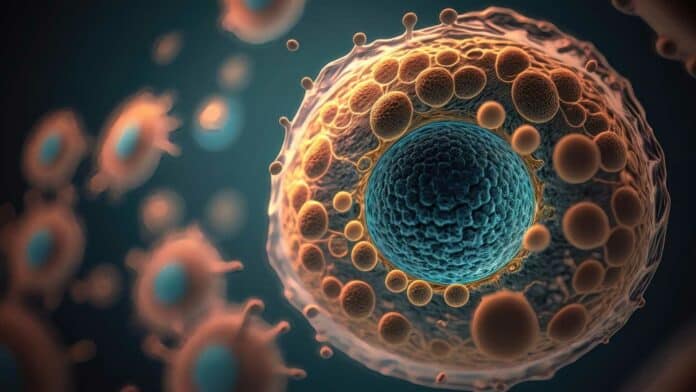Understanding how various cells in a tissue organize themselves to support tissue functions remains a challenge. Researchers from the Children’s Hospital of Philadelphia (CHOP) have created an AI-powered algorithm to aid in comprehending how different cells organize into specific tissues and communicate with each other. They tested this tool on two types of cancer tissues, unveiling insights into how cell “neighborhoods” interact to resist therapy.
Researchers introduced the concept of “tissue cellular neighborhoods” (TCNs) to comprehend how various cells align to support tissue functions. These are functional units where different, recurring cell types collaborate to fulfill specific tissue functions. The tasks of TCNs are expected to remain consistent across individuals. However, translating vast spatial omics data into interpretable models and hypotheses for testing requires advanced AI algorithms.
Senior study author Kai Tan, PhD, an investigator in the Center for Childhood Cancer Research at CHOP, said, “It is tough to study the tissue microenvironment, how certain cells organize, behave and communicate with one another.”
“Until recent advances in so-called spatial omics technology, it was impossible to spatially characterize more than 100 proteins or hundreds or even thousands of genes across a piece of tissue, which might be home to hundreds of thousands of cells and their respective genes.”
In this research, scientists introduced the deep-learning-based CytoCommunity algorithm. This algorithm identifies tissue cellular neighborhoods (TCNs) by considering cell identities, their spatial distributions in a tissue sample, and patient clinical data. It aids researchers in better understanding how these cell neighborhoods are organized and associated with specific clinical outcomes.
Breast and colorectal tumor samples were chosen for the study due to the availability of a large volume of data, allowing the algorithm to identify TCNs linked to high-risk disease subtypes. When applied to breast and colorectal cancer data, CytoCommunity revealed new fibroblast-enriched TCNs and granulocyte-enriched TCNs specific to high-risk breast cancer and colorectal cancer, respectively.
Tan said, “Since we were able to prove the effectiveness of CytoCommunity, the next step is to apply this algorithm to both healthy and diseased tissue data generated by research consortia such as HuBMAP (Human BioMolecular Atlas Program) and HTAN (Human Tumor Atlas Network).”
“For instance, using data from childhood cancers such as leukemia, neuroblastoma, and high-grade gliomas, we hope to find tissue cellular neighborhoods that might be associated with responses to certain therapies and combine our findings with genetic data to help determine which genetic pathways may be involved at the cellular and molecular levels.”
Journal Reference:
- Hu et al, “Unsupervised and supervised discovery of tissue cellular neighborhoods from cell phenotypes.” Nat Methods. DOI: 10.1038/s41592-023-02124-2
